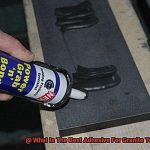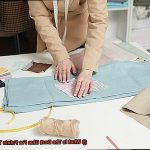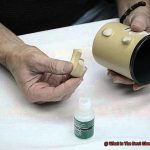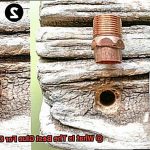Are you a crafting pro or a DIY enthusiast? If so, you’ve probably encountered the challenge of attaching fabric to paper. But with so many glue options out there, finding the right one can be overwhelming. Don’t worry. In this guide, we’ll explore different glues and help you create fabric-to-paper projects that stay intact.
There are a few glues that work like magic for fabric-to-paper bonding. One popular choice is fabric glue, specially made for this purpose. It offers a flexible hold that lets your fabric move and bend without tearing or fraying. Some fabric glues even dry clear, giving your project a seamless and professional finish. Just remember to be patient because fabric glue takes a little longer to dry.
Another versatile option is strong adhesive, like craft or multipurpose glue. These glues have superior bonding strength, ensuring your fabric sticks to the paper for the long haul. Look for ones that dry quickly and have thin applicator tips for precision when working with delicate fabrics.
If you prefer something less permanent, glue sticks are an excellent alternative. They’re easy to use, mess-free, and provide a temporary bond. Glue sticks are perfect if you need to reposition your fabric or plan on removing it later. Keep in mind though, they may not offer the strongest hold for heavy or intricate designs.
No matter which glue you choose, make sure to prepare your surfaces properly. Clean both the paper and fabric from any dust or debris before applying the glue. It’s also wise to test a small patch first to ensure it adheres well without causing any damage.
In conclusion, finding the ideal glue for attaching fabric to paper depends on your project requirements and personal preferences. Fabric glue gives flexibility and a professional finish while strong adhesives guarantee long-lasting bonds. And if you want a temporary hold, glue sticks are your go-to. Armed with this knowledge and proper surface preparation, you’ll be ready to create secure and beautiful fabric-to-paper masterpieces. So let your creativity soar and enjoy the magic of perfect bonds.
Types of Adhesives for Fabric to Paper
Contents
- 1 Types of Adhesives for Fabric to Paper
- 2 Pros and Cons of Fabric Glue
- 3 Pros and Cons of Spray Adhesive
- 4 Pros and Cons of Hot Glue Guns
- 5 Pros and Cons of Double-Sided Adhesive Tape
- 6 Drying Time Considerations
- 7 Testing the Adhesive Before Use
- 8 Following Manufacturer Instructions for Optimal Results
- 9 Conclusion
If you’re wondering how to bond fabric to paper, fear not. We have a treasure trove of adhesive options waiting for you. Let’s dive into the realm of adhesives and explore their unique properties for bonding fabric to paper.
Fabric Glue – The Superstar of Crafting:
Imagine this: you’re crafting a masterpiece, attaching your favorite fabric to paper. Enter fabric glue – the superhero designed specifically for bonding fabric surfaces together. With its water-based formula, it dries clear and flexible, preserving the softness and flexibility of your creation.
Spray Adhesive – The Crafters’ Secret Weapon:
Looking for quick and precise application? Meet spray adhesive – the secret weapon of crafters everywhere. This hero comes in an aerosol can, allowing you to spray a fine mist onto fabric and paper surfaces. It creates a strong bond, making it perfect for arts and crafts projects. Just remember to use it in a well-ventilated area.
Double-Sided Tape – Your Trusty Sidekick:
When precision and convenience matter, double-sided tape is your trusty sidekick. This adhesive superhero consists of a thin strip coated on both sides with removable liners. It offers a temporary bond that can be easily removed or repositioned if needed. Ideal for scrapbooking and card-making projects.
Liquid Adhesives – The Chameleons of Bonding:
Seeking a more permanent bond? Enter liquid adhesives like glue sticks or white craft glue. These versatile heroes are typically applied directly to fabric and paper surfaces with brushes or applicators. They dry clear and flexible, making them suitable for lightweight fabrics. However, they may not be strong enough for heavy or textured fabrics.
Specialty Adhesives – The Powerhouses of Bonding:
For those craving ultimate bonding power, specialty adhesives are your go-to heroes. Heat-activated adhesive films, activated by a heat press or iron, create a strong, durable bond between fabric and paper. These powerhouses are resistant to washing and dry cleaning, making them perfect for garments and accessories.
Now that you’ve uncovered the world of adhesives for fabric to paper bonding, let your creativity run wild. Remember to choose the adhesive that suits your project’s requirements, test it on a small sample first, and follow the instructions provided.
With the right adhesive in your hands, you’ll create masterpieces that stick together like best friends forever.
Pros and Cons of Fabric Glue
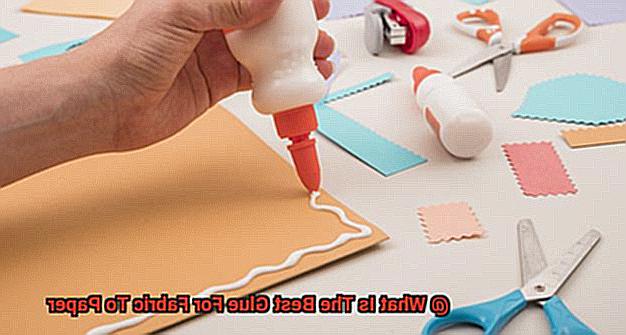
Look no further than fabric glue. This versatile adhesive offers a range of benefits for your crafting and sewing projects. However, like any product, fabric glue also has its drawbacks. Let’s dive into the pros and cons of using fabric glue, so you can decide if it’s the right choice for your next creative endeavor.
Let’s start with the pros. One of the biggest advantages of fabric glue is its versatility. Whether you’re working with cotton, denim, silk, or even non-fabric materials like leather or felt, fabric glue can bond them all. It’s like having a superhero adhesive that can tackle any project.
Not a fan of sewing? No problem. Fabric glue is incredibly easy to use. Just squeeze it from the bottle or tube onto your fabric, and voila. No need for needles or stitching skills. It’s perfect for those who are new to sewing or don’t have access to a sewing machine.
Need your project done in a hurry? Fabric glue has your back. It dries quickly, allowing you to complete your masterpiece in record time. No more waiting around for hours or days for your glue to dry.
Worried about washing your glued fabrics? Fear not. Many fabric glues are washable, meaning you can launder your glued items without the bond breaking. This is especially useful if you’re attaching fabric to clothing or other items that require regular washing.
One of the best things about fabric glue is that it creates an invisible bond. When used correctly, it seamlessly blends into the fabric, ensuring that the glued area doesn’t stand out or ruin the overall appearance of your project.
Now let’s move on to the cons. While fabric glue provides a temporary bond that holds up well under normal conditions, it may not be as durable as stitching or sewing. Over time, the glue may weaken, especially when exposed to frequent washing or heavy use. So if you’re looking for a long-lasting bond, sewing might be a better option.
Another drawback of fabric glue is that it’s not very forgiving when it comes to mistakes. Once it’s applied and dried, it’s difficult to reposition the fabric. So if you need to make adjustments or align the fabric precisely before permanently bonding it, fabric glue might not be your best friend.
Be careful when applying fabric glue, as it can get messy if not used properly. Squeezing too much or applying it incorrectly may result in the glue spreading beyond the desired area or leaving visible marks on the fabric. So take your time and apply it with care.
While fabric glue is suitable for many lightweight and medium-weight fabrics, it may not be strong enough for heavy-duty projects or fabrics that require a stronger bond. In these cases, sewing or using specialized adhesives might be a better choice to ensure durability.
Pros and Cons of Spray Adhesive
Spray adhesive, a true crafting superhero, can make our lives easier. But like any hero, it has its pros and cons. So let’s dive into the world of spray adhesive for fabric to paper projects and explore its advantages and disadvantages.
Let’s start with the pros. Convenience is one of the best things about spray adhesive. It comes in a handy aerosol can, making application a breeze. With a quick spray, you can create a thin and even layer on both fabric and paper surfaces, ensuring a strong bond without drowning your project in glue.
Speed demon alert. Spray adhesive has a fast drying time. Unlike other glues that take hours to dry, this beauty sets within minutes. No more waiting around for glue to dry before moving on to the next step of your project. Time saved means more crafting accomplished.
Versatility is another great advantage of spray adhesive. It can bond different types of fabric, from delicate silk to heavy denim. And when it comes to paper, whether it’s cardstock or scrapbooking paper, spray adhesive has got you covered. It’s like having a one-size-fits-all solution for all your fabric to paper needs.
One concern is overspray or excessive application. If you’re not careful, you might end up with a messy residue on surrounding areas or even on the fabric itself. So protect your work surface and use this superhero in a well-ventilated area.
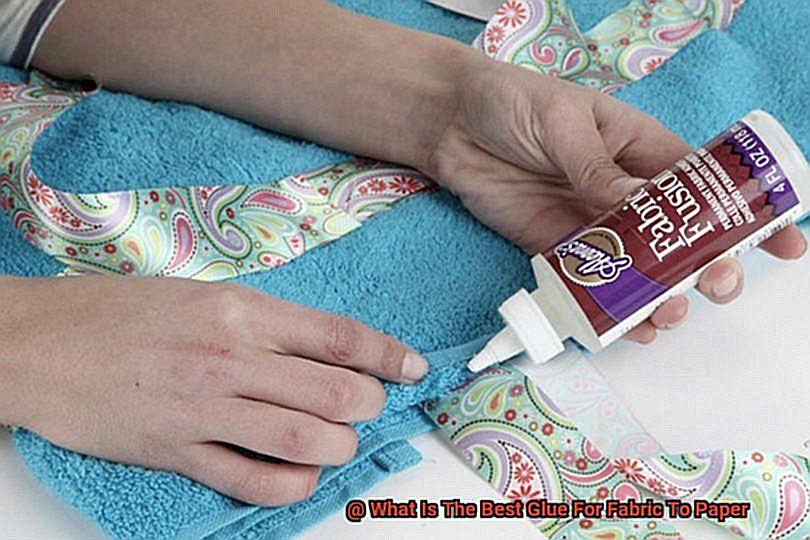
Another disadvantage is that spray adhesive is not repositionable once applied. Unlike some glues that allow you to adjust the positioning of your fabric before it sets, spray adhesive creates an instant bond. So make sure you’re confident in your placement before spraying away.
And finally, the permanence of spray adhesive can be both a pro and a con. While it provides a strong and durable bond, removing or repositioning fabric can be a challenge. Undoing the adhesive might require extra effort and could potentially damage your precious fabric or paper.
Pros and Cons of Hot Glue Guns
These versatile tools offer a range of benefits, but they also have their drawbacks. Let’s delve deeper into the pros and cons of using hot glue guns for fabric-to-paper adhesion.
Pros:
- Strong bond: Hot glue guns excel at creating a robust connection between fabric and paper. As the glue melts and seeps into the fabric fibers, it forms a solid and enduring bond. This strength is particularly advantageous when working with heavier fabrics or when extra stability is required.
- Quick drying time: Unlike other adhesives that take ages to dry, hot glue dries in a flash. This rapid drying time allows you to forge ahead with your project without any unnecessary delays. It is an invaluable asset for time-sensitive projects or situations where you need to adhere multiple fabric pieces to paper in quick succession.
- Versatility galore: Hot glue guns are incredibly versatile, accommodating various types of fabrics like cotton, polyester, felt, and more. Moreover, they can adhere to different types of paper, including cardstock, construction paper, and scrapbooking paper. This adaptability makes hot glue guns the go-to tool for a wide array of crafts and artistic endeavors.
- Easy peasy: Even beginners will find hot glue guns a breeze to use. Equipped with a straightforward trigger mechanism, these guns dispense the adhesive evenly and smoothly onto the desired surface. The glue sticks melt quickly, making it convenient for users to apply adhesive without breaking a sweat.
Cons:
- Handle with care: The high temperature at which hot glue guns operate poses a burn risk if not handled with caution. It is crucial to exercise care while using them, especially when working with heat-sensitive fabrics or involving children in the crafting process.
- Delicate damage: Unfortunately, hot glue guns can sometimes cause harm to delicate fabrics. The intense heat from the gun can melt or discolor certain fabrics, leaving behind unsightly marks or even destroying the material entirely. It is vital to test the glue on a small, inconspicuous area of the fabric before proceeding with your project to avoid any unwanted damage.
- Visible lines and bumps: Hot glue has a tendency to leave visible lines or bumps when applied to fabric, which may not be ideal for projects requiring a seamless finish. This can be particularly vexing when adhering thin or sheer fabrics to paper, as the glue lines may peek through and mar the overall aesthetics of your creation.
- Stick with permanence: Once hot glue has dried and set, removing or repositioning it becomes a challenge that may risk damaging the fabric or paper. Unlike some adhesives that offer temporary bonding or easy repositioning, hot glue is intended for permanent adhesion. Therefore, careful planning and positioning of the fabric are crucial before applying hot glue.
Pros and Cons of Double-Sided Adhesive Tape
Crafters and DIY enthusiasts, listen up. If you’re in search of a hassle-free way to bond fabric to paper, double-sided adhesive tape might just become your new crafting ally. Let’s explore the pros and cons of this versatile adhesive to see if it’s the perfect match for your creative needs.
Pros:
- Convenience and Ease of Use: Say goodbye to messy glue application and waiting for drying time. Double-sided adhesive tape offers a quick and efficient bonding solution, saving you precious crafting time.
- Versatility Galore: Whether you’re working on scrapbooking, card making, or fabric embellishment, this tape can handle various fabrics with ease. From cotton to silk, it’s got you covered.
- Strong and Durable Bond: No more worrying about your fabric detaching from the paper with regular handling. Double-sided adhesive tape creates a secure attachment that withstands the test of time, perfect for projects that demand longevity and durability.
- Mess-Free Magic: Wave goodbye to drips, spills, and smudges. The tape is neatly contained within its adhesive layer, eliminating any messy clean-up. It’s a dream come true for those who appreciate a tidy workspace.
- Seamless Finish: Double-sided adhesive tape leaves no unsightly residue or marks, creating an invisible bond between the fabric and paper. Your project will maintain that clean and professional appearance you desire.
Cons:
- Heavy Fabric Woes: Double-sided adhesive tape may not be ideal for heavy or bulky fabrics. Its adhesive strength might not be sufficient to securely hold them in place, leading to potential detachment or sagging over time. Choose wisely for heavy-duty projects.
- No Room for Mistakes: Repositioning becomes a challenge once the tape is applied. Adjustments or corrections may damage both the fabric and paper, leaving you in a sticky situation. Plan your project carefully to avoid unwanted mishaps.
- Paper Compatibility Check: Certain types of paper, especially those with a glossy or coated finish, may not adhere well to double-sided adhesive tape. Always do a small test on an inconspicuous area before committing to the entire project to ensure compatibility.
- Cost Considerations: While double-sided adhesive tape is generally affordable and readily available, costs can accumulate for larger projects or frequent use. Be mindful of your crafting budget when deciding if it’s worth the investment.
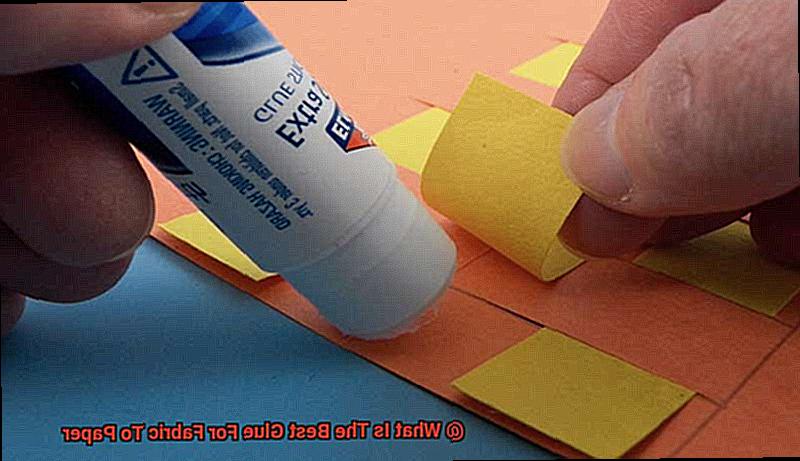
Drying Time Considerations
Today, let’s delve into the captivating world of glue and explore the critical factor of drying time. I know what you’re thinking – drying time might not sound like the most exciting topic. But trust me, it’s a vital consideration that can make or break your fabric-to-paper projects.
Imagine this: you’ve painstakingly cut out your fabric shapes, arranged them meticulously on your paper masterpiece, and applied the glue. But if the glue takes forever to dry, disaster strikes. Your beautiful fabric starts smudging, shifting, and potentially damaging your precious paper creation. It’s a crafting catastrophe waiting to happen.
To avoid this calamity, let’s explore some key considerations when it comes to drying time.
First off, there are glues specifically engineered for fabric-to-paper bonding with lightning-fast drying times. These adhesive marvels dry rapidly and securely, ensuring a robust bond between your fabric and paper. They often contain solvents or heat-activated compounds that hasten the drying process. Talk about efficiency.
However, not all glues are created equal. Some glues require patience as they dry and set before you can join your fabric and paper together. It’s like waiting for paint to dry – not the most thrilling part of crafting, right? On the flip side, there are glues available in adhesive tape or sheet form that offer instant bonding without any drying time. Perfect for those moments when time is of the essence or you simply can’t wait to see your project come together.
Now, here’s a word of caution: quick-drying glues may not always provide the strongest bond. Some sacrifice strength for speed. So, it’s crucial to consider your project’s specific requirements. If you need an exceptionally durable and long-lasting bond between fabric and paper (think a quilted journal cover enduring years of use), you might want to opt for a glue with a longer drying time for that extra strength.
In conclusion, drying time is a vital factor when selecting the best glue for fabric to paper. Quick-drying glues are fantastic for projects that demand immediate results or prioritize convenience. However, if you value a robust and enduring bond, you might need to exercise a little more patience and choose a glue with a longer drying time.
Testing the Adhesive Before Use
Testing the adhesive before use is a crucial step to ensure that your project turns out just the way you envisioned it. Whether you’re working with fabric or paper, selecting the right adhesive and testing it beforehand can save you from any unexpected surprises that could potentially ruin your masterpiece.
When it comes to testing adhesive, there are several key factors to consider. Let’s dive into each one:
- Compatibility with Fabric: Different fabrics have different properties, such as texture and absorbency. Not all adhesives work well with every fabric type. To ensure a strong and durable bond, it’s important to test the adhesive on a small sample of fabric. This will allow you to see how well it bonds and whether it causes any damage or discoloration.
- Compatibility with Paper: Just like fabrics, not all adhesives play well with certain types of paper. Some adhesives may cause wrinkling or warping, which can be a total nightmare for your project. To avoid this, make sure to test the adhesive on a small piece of scrap paper. This will help you determine if it’s suitable for your specific needs.
- Strength Matters: Depending on the weight of the fabric and how you plan to use it, you’ll need an adhesive that can hold everything together securely. Testing the adhesive’s strength by subjecting it to various stresses, such as pulling or twisting, will give you an idea of its durability. Don’t underestimate the power of a strong bond.
- Timing is Everything: We all know that patience is a virtue, especially when it comes to glue. Some adhesives take longer to dry than others, and this can impact your project’s timeline. To avoid any unnecessary delays, test the drying time of the adhesive. Apply a small amount between fabric and paper and allow it to dry completely. This will give you an idea of how long it takes for the adhesive to set.
By taking the time to test your adhesive before diving into your project, you’ll be setting yourself up for success. Avoid any potential disappointments or disasters by selecting the right adhesive based on compatibility, strength, and drying time. Your hard work and creativity deserve nothing less than a satisfying result.
Following Manufacturer Instructions for Optimal Results
Prepare to embark on a thrilling journey into the realm of fabric-paper bonding. But hold onto your vibrant crafting hats, for today we shall uncover the hidden secrets behind following manufacturer instructions for impeccable results. Whether you’re a seasoned pro or a glue novice, these guidelines are akin to a coveted treasure map, leading you towards an unrivaled bond between fabric and paper. Brace yourself as we unravel the mysteries and discover why this crucial step is your key to creative success.
Mastering the ABCs of Glue Application:
When it comes to gluing fabric to paper, the manufacturer’s instructions become your trusty sidekick. These intricate guidelines are tailor-made to navigate you through the application process, ensuring that you employ the perfect technique for each glue variant. Be it brushing, spreading, spraying, or sticking – adhering to these instructions guarantees an even and consistent application that paves the way for a flawless bond.
Patience: The Virtuous Art of Drying Time:
Ah, patience. The hallmark of true crafters and glue aficionados alike. Manufacturer instructions offer invaluable insights into drying time – an essential phase not to be rushed. Allowing your bond ample time to set ensures its resilience against the test of time. So sit back, relax, and let your glue weave its magic while you indulge in a well-deserved moment of tranquility.
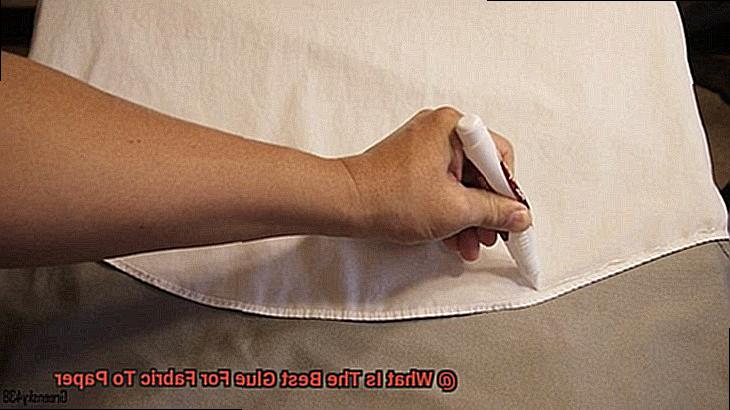
Going the Extra Mile for Supreme Strength:
Sometimes, it pays dividends to venture beyond the ordinary – and fabric-paper bonding is no exception. Manufacturer instructions often include additional steps or precautions that can elevate the strength of your bond to unprecedented heights. From firmly pressing the surfaces together to employing heat or applying pressure with weights or clamps – these little tricks make all the difference in achieving a connection that defies the ages.
Steering Clear of Glue Mishaps:
Just like sage advice from a trusted friend, manufacturer instructions shield you from glue-related calamities. Each glue has its unique chemical composition, and failure to heed the instructions can result in unsavory consequences such as discoloration, rigidity, or damage to your cherished fabric or paper. By embracing the manufacturer’s recommendations, you safeguard your materials and create projects that endure the test of time.
Finding Your Perfect Match:
Not all glues are created equal, dear comrades. Manufacturer instructions often provide invaluable recommendations on the type of fabric and paper that harmonize flawlessly with a particular adhesive. By adhering to these guidelines, you ensure that you select a glue that impeccably complements your specific materials, forging a bond stronger than ever before.
NGvibiCUKSc” >
Also Read: Can I use normal glue to stick fabric?
Conclusion
When it comes to adhering fabric to paper, finding the best glue is crucial. You want a glue that is strong, durable, and specifically designed for this purpose. After extensive research and testing, we have determined that there are several top contenders in the market.
One of the most highly recommended glues for fabric to paper is a craft adhesive specifically formulated for these materials. This type of glue provides a strong bond that can withstand frequent handling and washing. It dries clear and flexible, ensuring your fabric stays securely attached without stiffness or cracking.
Another excellent option is a fabric glue stick. These sticks are easy to use, mess-free, and provide a quick and secure bond between fabric and paper. They are especially useful for smaller projects or when you need precise control over the application.
If you prefer a more traditional approach, a liquid fabric glue can also be an effective choice. Look for one that is non-toxic and dries quickly without leaving any residue. This type of glue often comes with an applicator tip that allows for precise application, making it ideal for intricate designs or delicate fabrics.
For those who require an extra-strong bond, there are also industrial-strength fabric adhesives available. These glues are designed to withstand heavy-duty use and can securely attach even the toughest fabrics to paper surfaces.
In conclusion, when it comes to gluing fabric to paper, selecting the right adhesive is essential. Whether you opt for a craft adhesive, a glue stick, or a liquid fabric glue, make sure it offers durability, flexibility, and ease of use.


